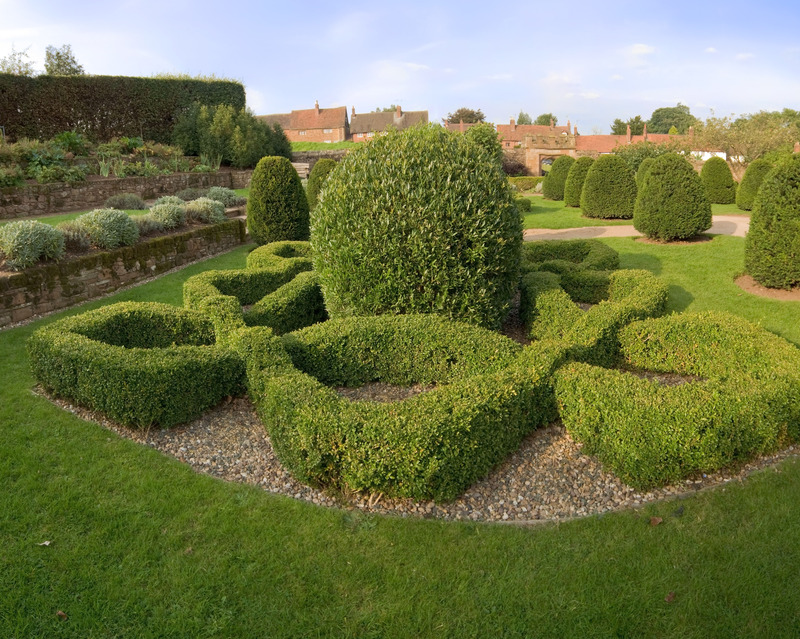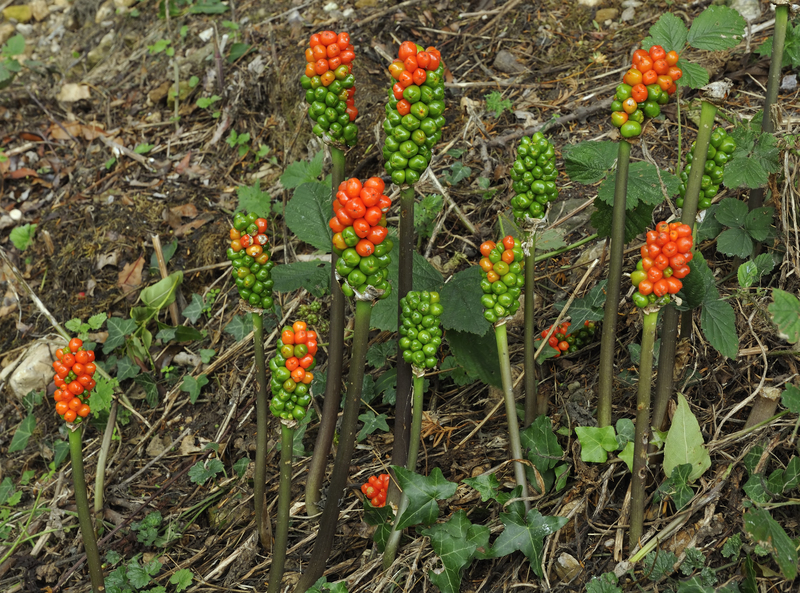Building a Sustainable Garden with Dog Help
Posted on 22/06/2025
Building a Sustainable Garden with Dog Help: An All-in-One Guide
Looking to cultivate a sustainable garden and include your furry companion in the process? Whether you're a dog lover or a passionate gardener--or both--you'll be delighted to learn that sustainable gardening with dogs is not just possible, but can also be an incredibly rewarding and eco-friendly project.
This article explores how to establish an environmentally friendly garden with your dog's help, covering everything from eco-gardening basics to dog-safe plants, creative dog-friendly landscaping, and practical tips for involving your canine companion every step of the way.

Why Combine Gardening and Dogs?
Gardening is therapeutic and essential for the environment, while dogs are known to enhance our well-being and create joyful, active lifestyles. But why blend the two activities?
- Promotes sustainability: Using organic and native plants, composting, and water-wise designs aligns with sustainable living.
- Supports canine enrichment: Dogs need mental and physical stimulation; gardens offer a great environment for exploration and exercise.
- Builds connection: Working side by side with your dog deepens your bond and provides shared enjoyment.
- Teaches responsibility: Both pet ownership and gardening cultivate responsibility and mindfulness towards nature.
Planning a Dog-Friendly, Sustainable Garden
Any sustainable garden with dog help starts with thoughtful planning. Here's how you can lay a solid foundation for your eco-friendly paradise:
1. Assess Your Space
Walk your entire yard with your dog. Take note of areas your pup already enjoys, pathways they use, and zones prone to digging or rough play. Include your dog's personality in your sustainable garden design!
2. Prioritize Safety First
Not all plants or materials are safe for dogs. Before you start, research dog-friendly plants and avoid any that are toxic to pets. Also consider fencing, shaded areas, and avoiding sharp garden tools or harmful chemicals.
- Install secure fencing to keep dogs safe and away from roads.
- Choose mulch types that are non-toxic; avoid cocoa mulch.
- Keep compost bins out of reach.
- Opt for organic pest control and fertilizers.
3. Embrace Permaculture Principles
Permaculture is a philosophy that fosters working with, rather than against, nature. Integrate features like:
- Rainwater harvesting for sustainable irrigation
- Composting for healthy, organic soil
- Native plants to attract pollinators and require less watering
- Edible landscaping for you and dog-safe herbs for your pup
4. Designate Dog Zones
Every garden with dog involvement needs spaces for digging, running, and relaxing. Use low hedges, rocks, or logs to define paths and areas that belong to your dog. This establishes boundaries while keeping your garden thriving.
Sustainable Gardening Tasks Where Dogs Can Help
Dogs may not wield shovels or trim shrubs, but they can still contribute to your garden's ecosystem. Here's how to harness your dog's natural behavior to your ecological advantage:
1. Natural Pest Control
- Patrol and deter rodents or pests: Dogs can discourage moles, rabbits, and other unwanted visitors.
- Low-impact pest management: Their scent and presence often keep garden invaders at bay without toxic chemicals.
2. Earth Movers
Certain breeds love to dig. Rather than fighting this innate behavior, set up a designated digging pit. Fill it with sand and bury toys. Let your dog "help" by turning soil in this area and satisfy their instinct while protecting the rest of your garden.
3. Composting Companions
- Let your pup accompany you as you add kitchen scraps or yard waste to the pile--just avoid composting pet waste.
- Teach your dog to "stay" as you handle compost, fostering safety and involving them in the process.
4. Exercise Partners
Your dog's need for daily walks gives you the perfect reason to survey your garden regularly. As you stroll, inspect irrigation, spot weeds, and identify harvest-ready produce--your dog will be your loyal garden assistant every step of the way.
Best Practices for Sustainable Gardening with Dogs
To maximize the joy and minimize the hassle, follow these key tips when building a sustainable garden with dog help:
Choose Dog-Safe, Eco-Friendly Plants
Selecting the right plants is crucial. Avoid toxic varieties and favor those that require less water, promote local wildlife, and can handle the occasional dog run-through.
- Dog-friendly plants: Marigolds, sunflowers, snapdragons, rosemary, thyme
- Hazardous plants to avoid: Foxglove, oleander, azaleas, lilies, sago palm
- Durable grasses: Bison, bermuda, and buffalo grass are hardy under paws
- Ground covers: Clover, creeping thyme, or native alternatives
Smart Landscaping for Curious Canines
- Lay non-toxic mulch or pea gravel in active zones
- Install stepping stones along high-traffic paths
- Use raised beds or container gardens to protect tender edibles
- Add digging zones and dog tunnels for engaging play
- Incorporate water features your dog can safely splash in (like a shallow dog pond)
Compost and Fertilizer Guidelines
- Compost: Only use plant-based food scraps and never compost dog feces, as they may introduce harmful pathogens.
- Fertilizers: Stick to organic products and avoid those containing bone or blood meal; these can be tempting (and dangerous) for dogs.
Cultivating Sustainability: Specific Strategies
Let's dive deeper! Below are some specialized tactics for creating a truly sustainable, dog-friendly garden.
Embrace Wildlife--and Keep Dogs in Check
- Fill your garden with native plants that attract birds, butterflies, and beneficial insects.
- Provide birdbaths or bee hotels in dog-free corners.
- Use vertical or wall gardens to ensure pollinator plants aren't trampled.
- Employ gentle fencing or netting to deter curious pups from approaching sensitive habitats.
Water Conservation Techniques
- Employ drip irrigation or soaker hoses instead of sprinklers for targeted, efficient watering.
- Install rain barrels to harvest and reuse rainwater on flower beds and lawns.
- Mulch beds to preserve moisture and keep roots cool, which benefits both plants and pets on hot days.
- Choose drought-tolerant plant species that thrive with minimal water need.
Soil Health and Regeneration
- Add compost, leaf litter, and grass clippings to boost soil organic matter.
- Rotate plantings to prevent disease and maintain fertility.
- Avoid chemical pesticides; use companion planting and natural predators (like ladybugs) instead.
Canine Enrichment: How Your Dog Benefits
Gardening with your dog not only makes your landscape more resilient but also offers many perks for your four-legged friend:
- Mental stimulation: New sights, smells, and textures keep your dog engaged
- Physical exercise: Running, digging, exploring garden zones supports health
- Social enrichment: Time spent together forges an even stronger bond
- Natural training: Using gardening tasks to reinforce "stay," "leave it," and other commands
- Cool-down zones: Shaded nooks or cooling pads keep your dog comfortable during garden time
Creating a Garden Schedule for You and Your Dog
- Early mornings or late afternoons: Best for walks, watering, and pest patrols
- Mid-morning: Safe, supervised digging or sniffing sessions
- Evening: Harvesting, compost additions, and relaxing together
Common Mistakes to Avoid
Even the best intentions can go awry. To keep both your sustainable garden and canine partner in top form, steer clear of these common errors:
- Neglecting plant research: Always verify the safety and suitability of plants for your region and your dog.
- Forgetting escape artists: Regularly check fencing for weaknesses that clever pups could exploit.
- Using toxic products: Avoid synthetic fertilizers, pesticides, or cocoa mulch that harm dogs and soil microbes.
- Assuming compost is dog-safe: Keep compost enclosed--moldy or rotting matter can be harmful if ingested by pets.
- Underestimating training: Dogs need consistent boundaries, especially around young or sensitive plants.

Year-Round Sustainable Garden Activities for You and Your Dog
A sustainable garden with dog help is an ongoing adventure. Here are season-by-season ideas to keep things fresh and fun:
- Spring: Start new seedling beds, create dog and human compost bins, build rainwater catchment, mark dog-safe zones
- Summer: Add shade features, install a shallow dog pool, regularly harvest, and host garden play dates
- Fall: Collect fallen leaves for compost, plant hardy perennials, reinforce mulch, and maintain fencing
- Winter: Plan new beds, take indoor plant cuttings, do garden tool maintenance, and practice training exercises with your dog indoors
Final Thoughts: Growing Greener, Together
Building a sustainable garden with dog help brings together environmental stewardship, outdoor beauty, and the irreplaceable joy of bonding with your furry best friend. The key to success lies in making thoughtful plant choices, maintaining safe and stimulating spaces for your dog, and embracing eco-friendly gardening techniques all year round.
With a plan and your pup by your side, your landscape will flourish--offering sanctuary for both humans and animals, a haven for pollinators, and a lifelong lesson in stewardship for all who visit. Happy gardening!

